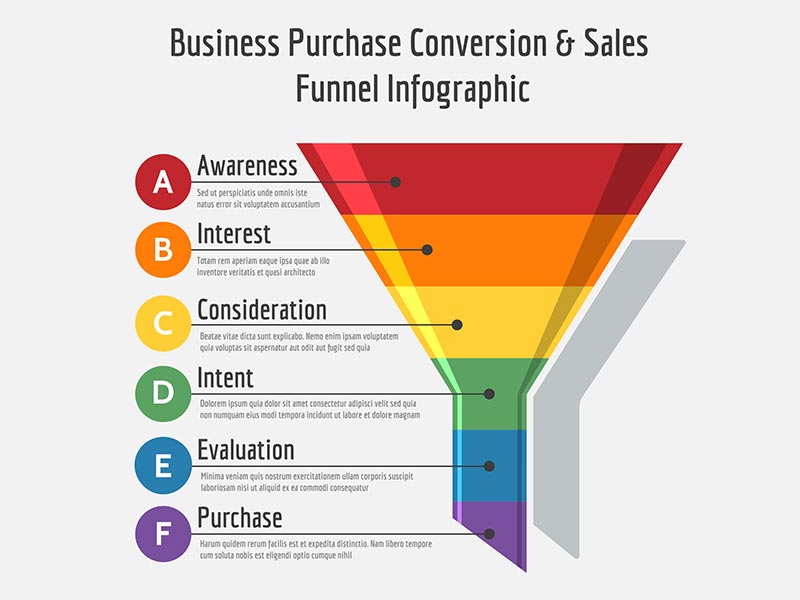Checks and balances on sales funnels
Home » Checks and balances on sales funnels

- December 2019
Every sales beginner is familiar with the “Law of large numbers”. It’s an easy statistical logic to understand. Not every customer is going to say “Yes”, therefore, to achieve growth targets, you need more money in the funnel than the target itself. It’s common to think that the more potential deals you have in the funnel is better. However, these days, with the ease of generating new leads online, I would like to challenge this assumption with 3 points to think about before pumping your funnel with more and more leads.
Make sure your Ads and Customer Experience are aligned
Some marketing managers are tempted to attract customers with false promises or exaggerations and manipulations. It can be targeted towards the presentation of the product, price, sale process or overall expected customer experience. This point was also discussed from another perspective in our post on 5 ways to convert more leads .
Filling your funnel with leads that are expecting a different experience, or provided details as a result of a manipulation (give details get a free something), will have a natural tendency to get disappointed, annoyed and later on walkaway. Bringing such leads is a sure way to reduce your conversion rates, waste time, burn out your market and lower your forecasting capabilities. It will also make your sales team frustrated over time as sales people need success like the desert needs the rain – without it they will not thrive.
Eliminate high overhead customers
In each business you should build and constantly improve a good understanding of the specific indicators to recognize “time wasting customers”. These could be customers that are only fishing for information out of personal curiosity, or simply have interest with no real buy intention. It could also be a customer that is looking for a much cheaper solution than the one you offer and will buy only on price which you can’t offer. Especially with digital marketing leads, some can be freelancers checking what’s new in the market, people mistaking your product/service for something else and more.
Sometimes there are good surprises, so in my mind all leads are usually worth qualifying with a form of first interaction. However, you should have very a clear criteria on where to stop your efforts on some leads and take them out of the funnel. The most limited resource you have is time and you need to make sure it’s invested on the right opportunities.
Rule of disengagement
The second important thing after recognizing a “Time Waster” is the rule of disengagement. Sales managers often focus and train their teams on rules of engagement and forget to mention the rules of disengagement. Disengagement needs to be done in a way that will not alienate the person on the other side. Remember, people switch companies, positions and you can never know when this “time waster” will become relevant in the future.
By the way, Salesforce has a great tool called Einstein which is using AI to prioritize leads (among other very cool stuff). A great tool to consider in order to invest time on the right leads first while they are still hot! Such tool is also assisting in shortening response time (to the more important leads) which is one of the important factors to convert more leads.
Don’t burn the market
In today’s connected world success can be overwhelming. Leads intake can skyrocket quickly with a good campaign or PR exposure which are a great opportunity for any company. In such case the leadership factor comes into play. Sales managers need to make sure all hands are on deck and that they have enough resources to handle the load.
Having more leads than you can close, supply product too or act on, sounds great, but is infect very bad from a healthy company or investor point of view. It creates a bad customer experience and some of them may not contact you again. What’s even worse is that some of them may share their bad experience with others which can cause the “wheel of good fortune” to turn the other way.
If you can’t get more resources to handle the intake you still have options. You can quickly implement some automation that can assist with initial response (which is the most important) or try to think of a creative way to explain delayed response to the customer and receive their understanding. Success is a great story to tell, but you need to find the right way to tell it so the customer understands and keep the process with you in the pace your resources allow. Actually, if done right, this could be a stronger reason to work with you and an actual selling point.
To summarize, we all like to see a big chunky funnel with a large quantity of leads and opportunities in the sales pipe. However, we should also make sure we are managing the qualification process of each lead correctly, not choosing quantity over quality, wasting resources or even worse – leaving good leads behind. Remember, the balance here must include a good customer experience and a motivated sales team.


 Accessibility
Accessibility